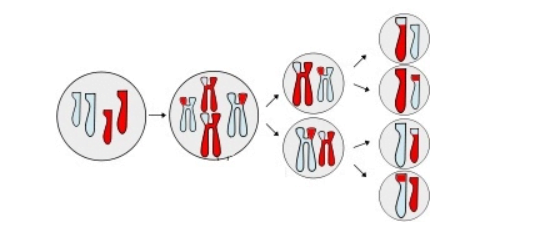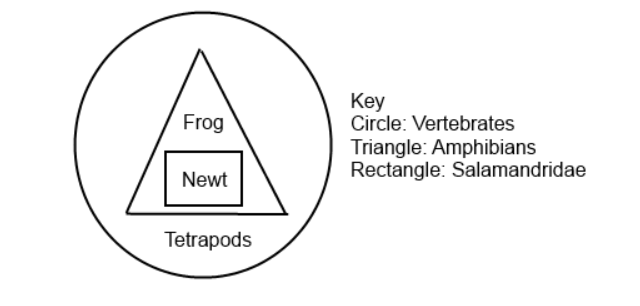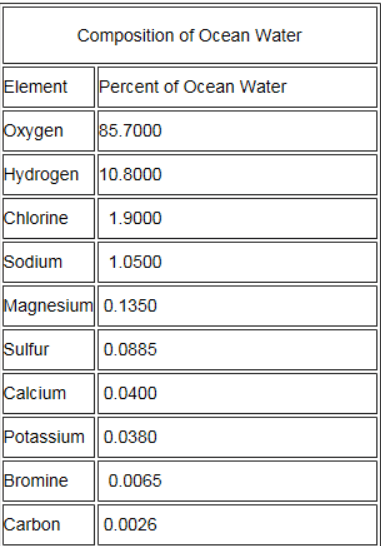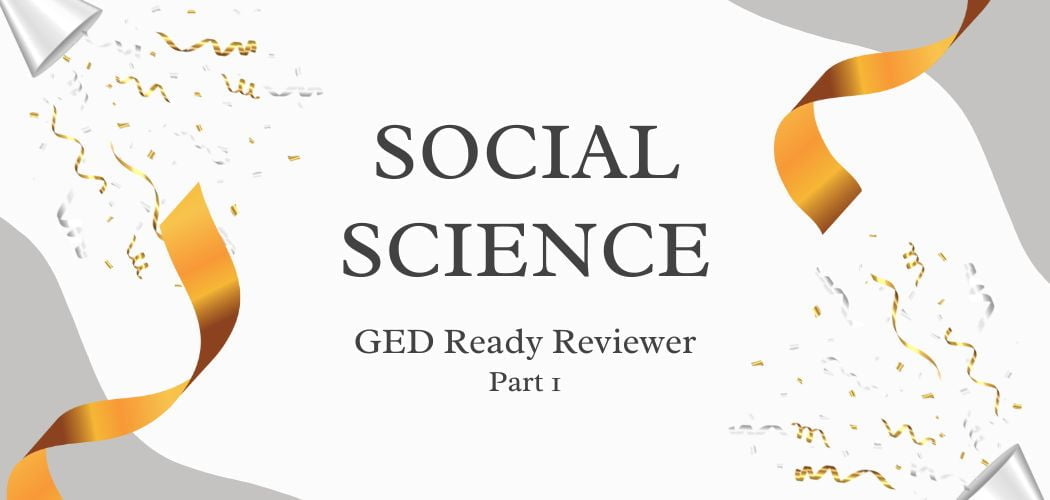GED is an important test that requires preparation. Since it is a computer-based exam, the test questions are scrambled to protect its integrity. We recommend reading the following articles to know more about the exam and learn key strategies that’ll help you make big improvements during the actual tests.
This is Part-2 of our free GED reviewer for Science. Topics included in this review material are Life Science, Physical Science, Earth and Space Science, and Science Practices. The exam is designed to assess your ability to read, understand, and apply scientific concepts and principles.
GED Ready Science reviewer
Read the passage below and answer the following question.
Many individuals concerned with their carbon footprint are excited about the availability of hybrid electric vehicles. These cars are much more efficient in their use of fossil fuels than similarly sized internal combustion automobiles. However, hybrid electric vehicles do come with an environmental price tag. Their construction uses scarce metals, such as neodymium, lithium, and lanthanum. Additionally, mining these elements involves pumping acids into deep boreholes to dissolve the surrounding rock and then removing the acid and mineral slurry. Such extraction processes are a type of surface mining, which has severe environmental impacts such as erosion, acid mine drainage, water pollution, and disruption of habitat.
Question 1. Which sentence from the passage above best supports the idea that driving a hybrid electric vehicle burns gasoline?
A. “Such extraction processes are a type of surface mining, which have severe environmental impacts such as erosion, acid mine drainage, water pollution, and disruption of habitat.”
B. “However, hybrid electric vehicles do come with an environmental price tag”
C. “These cars are much more efficient in their use of fossil fuels than similarly sized internal combustion automobiles.”✅
D. “Many individuals concerned with their carbon footprint are excited about the availability of hybrid electric vehicles.”
Question 2. Mechanical advantage is a measure of the force amplification that is achieved by using a tool, mechanical device, or machine system. The formula for mechanical advantage is:

A crowbar can be used to remove a nail from a board. If the crowbar has a mechanical advantage of 6, and a force of 38 Newtons is applied to it, what will be the output force?
A. 228 Newtons✅
B. 32 Newtons
C. 5 Newtons
D. 0.2 Newtons
Question 3. In a Science class, the students conducted an experiment to determine the effects of watering a monggo seed inside a transparent jar. After one week, they notice that the monggo plant reached and an average of 17.3 millimeters tall. (1 decimeter = 100 millimeters) (1 meter = 10 decimeters). Convert this height measurement into meters.
A. 0.00173 meters
B. 0.0173 meters✅
C. 1.73 meters
D. 0.173 meters
How many calories does someone need to eliminate from their diet in order to lose weight? First, they should calculate their basal metabolic rate (BMR) which identifies how many calories they burn each day when at complete rest. After calculating their BMR, they can then use an additional formula to factor in their level of activity. There are separate BMR formulas for men and women, and these formulas require three variables: age, height, and current weight. Here is the BMR formula for women:
BMR = 655 + (4.35 × W) × (4.7 x H) − (4.7 × A)
W = Weight in pounds
H = Height in inches
A = Age
Question 4. According to the formula, which of the following will result in a lower BMR?
A. Greater height
B. Greater age✅
C. Greater weight
D. All of the above
Many individuals concerned with their carbon footprint are excited about the availability of hybrid electric vehicles. These cars are much more efficient in their use of fossil fuels than similarly sized internal combustion automobiles. However, hybrid electric vehicles do come with an environmental price tag. Their construction uses scarce metals, such as neodymium, lithium, and lanthanum. Additionally, mining these elements involves pumping acids into deep boreholes to dissolve the surrounding rock and then removing the acid and mineral slurry. Such extraction processes are a type of surface mining, which has severe environmental impacts such as erosion, acid mine drainage, water pollution, and disruption of habitat.
Question 5. Based on the passage above, what are the environmental trade-offs of hybrid electric vehicles?
A. Water near surface mining operations is highly acidic, sometimes with a pH of 2.5 or lower.
B. There is only enough lanthanum available in the world to meet the demand for the Toyota Prius.
C. Toyota obtains its lanthanum from China.
D. While hybrid cars may reduce our dependence on fossil fuels, they may also increase our dependence on metals that are extracted from the ground in a destructive manner.✅
Question 6. When pea plants exhibit purple flowers, yellow seeds, or inflated seed pods, these are dominant traits. Conversely, white flowers, green seeds, and constricted seed pods are recessive traits. Assuming a homozygous dominant plant for flower color is bred with a heterozygous flower color plant, what percentage of the offspring will possess yellow flowers?
A. 0%✅
B. 25%
C. 75%
D. 100%
A collection of computers linked together to share resources is called a computer network. The time required for a data packet to travel between two specific points in a network is known as network latency. It is crucial to reduce network latency for the optimal operation of computer networks. The below formulas can be utilized to compute latency:
Network Latency =Propagation Delay + Serialization Delay
Propagation Delay = Distance/Speed
Serialization Delay = Packet Size (bits)/Transmission Rate (bps)
Question 7. Which of the following changes would decrease network latency?
A. Decrease speed
B. Decrease transmission rate
C. Decrease packet size✅
D. Increase distance
Question 8. In an experiment to determine whether exposure to classical music improves academic performance, a researcher exposes one group of students to classical music while another group is not exposed to it. What is the dependent variable in this experiment?
A. The students’ scores on an academic test
B. The academic performance of the students✅
C. The number of students who have previously listened to classical music
D. The number of days since the students’ last exposure to classical music
A study was conducted to investigate how caffeine consumption affects the pulse rate of 20 healthy women aged 20. The participants consumed a 250 mL beverage at a consistent time of day, while in a fasted state. Prior to consuming the beverage and again 30 minutes after consuming it, the participants’ pulse rates were measured. This experiment was repeated five times over the course of five days, with five different types of beverages. The results of the study are presented below.
| Beverage | Amount of Caffeine (mg/serving) | Average pulse at 0 minutes | Average pulse at 30 minutes |
|---|---|---|---|
| Water | 0 | 0 | 60 |
| Regular coffee | 45 | 59 | 82 |
| Decaffeinated coffee | 03 | 61 | 66 |
| Caffeine-free soda | 0 | 54 | 55 |
| Caffeinated soda | 10 | 59 | 69 |
Question 9. Based on the data analysis, what conclusion can be drawn about the impact of caffeine consumption on the heart rate of women who are healthy and 20 years old?
A. Caffeine decreases the pulse rates of women
B. Caffeine is safe to consume
C. Regular coffee is healthier than decaffeinated coffee
D. Caffeine increases the pulse rates of women✅
Question 10. In a study investigating the effects of different doses of a new medication on patients with a particular condition, what type of variable is the medication dosage?
A. Responding
B. Random
C. Independent✅
D. Dependent
Question 11. What process is illustrated in the diagram below?
A. meiosis✅
B. mitosis
C. mutation
D. codification

Observe the given data below:
| Racer | Distance (m) | Time (s) |
| 1 | 1550 | 102 |
| 2 | 1550 | 110 |
| 3 | 1600 | 116 |
| 4 | 1600 | 125 |
| 5 | 1600 | 114 |
| 6 | 1600 | 144 |
Question 12. What is the median time, in seconds, of the 6 bicycle racers?
A. 118.5
B. 116
C. 115✅
D. 114
Question 13. Which statement can be inferred about amphibians based on the image below?
A. All amphibians are Salamandridae, but not all Salamandridae are amphibians.
B. All amphibians are vertebrates, but not all vertebrates are amphibians.✅
C. Some amphibians are vertebrates, but not all amphibians are vertebrates.
D. Some Salamandridae are amphibians, but not all amphibians are tetrapods.

Question 14. Which of the following is true about the frog based on the image below?
A. It is a non-vertebrate.
B. It is a member of the Salamandridae family.
C. It is closer to most tetrapods than most newts.
D. It is a type of amphibian.✅

Question 15. The selective breeding of plants and animals for desirable traits allows humans to exert an influence on an organism’s genotype by choosing which individuals are allowed to reproduce. What term did Darwin coin to describe this type of modification in organisms?
A. survival of the fittest
B. artificial selection✅
C. natural selection
D. hybridism
Question 16. The birds shown in the image below possess the ability to extract food particles from the fur of the deer, which doesn’t pose any threat to them. Remarkably, the deer tolerates the presence of the birds and allows them to perch on its body.
A. Symbiosis✅
B. Competition
C. Homeostasis
D. Adaptation

The table below contains details regarding the composition of ocean water.

Question 17. Which statement is supported by the data in this table?
A. Carbon plays a small, but important role in the ecosystem of the ocean.
B. If bromine was more highly concentrated, then it could be extracted for use in disinfectants.
C. There is more chlorine in ocean water than sodium and sulfur combined.✅
D. There is more potassium in ocean water than magnesium.
Read the passage below and answer the following question:
There are two types of planets in the solar system: Terrestrial and Jovian. Terrestrial planets are also called inner planets or rocky planets. They are smaller in size, higher in density, made mostly of rock and metal, closest to the sun, and have few moons and no rings. Jovian planets are also known as the outer gas giants. They are larger in size, lower in density, made mostly of gasses, further from the sun, and often have ring systems and many moons. There is also a sub-classification of outer gas giants known as ice giants. Ice giants are smaller in size, smaller in mass, have lower amounts of gasses, and more rock and ice. Neptune and Uranus are ice giants.
Question 18. What can be inferred from this passage about the differences between Neptune and Saturn?
A. Neptune is icier than Saturn.✅
B. Saturn is smaller than Neptune.
C. Saturn is rockier than Neptune.
D. Neptune has more moons than Saturn.
Read the paragraph below and answer the following question:
In July 1957, members of a field party from the University of Kansas Natural History Museum, under the direction of Sydney Anderson, spent 12 days collecting vertebrates in the vicinity of Creel in southwestern Chihuahua. Among the specimens were two snakes representing an undescribed species of the genus Geophis. The discovery of a new Geophis species in southern Chihuahua increased the number of species in the genus known to occur in Mexico to 21 and extended the range of the genus by over 500 miles. Geophis aquilonaris is different from all other Mexican representatives of the genus because it has numerous, alternating pale and dark bands on the body and tail. Both sets of bands are in the form of complete rings, or the dark bands are joined ventrally rendering the belly dark.
Question 19. Which sentence from the paragraph supports the idea that species in the same genus can have unique characteristics?
A. “Geophis aquilonaris is different from all other Mexican representatives of the genus because it has numerous, alternating pale and dark bands on the body and tail.”✅
B. “The discovery of a new Geophis species in southern Chihuahua increased the number of species in the genus known to occur in Mexico to 21 and extended the range of the genus by over 500 miles.“
C. “Among the specimens were two snakes representing an undescribed species of the genus Geophis.”
D. “In July 1957, members of a field party from the University of Kansas Natural History Museum, under the direction of Sydney Anderson, spent 12 days collecting vertebrates in the vicinity of Creel in southwestern Chihuahua.”
Question 20. What is a common example of a renewable energy source?
A. Coal
B. Natural gas
C. Solar power✅
D. Nuclear power



